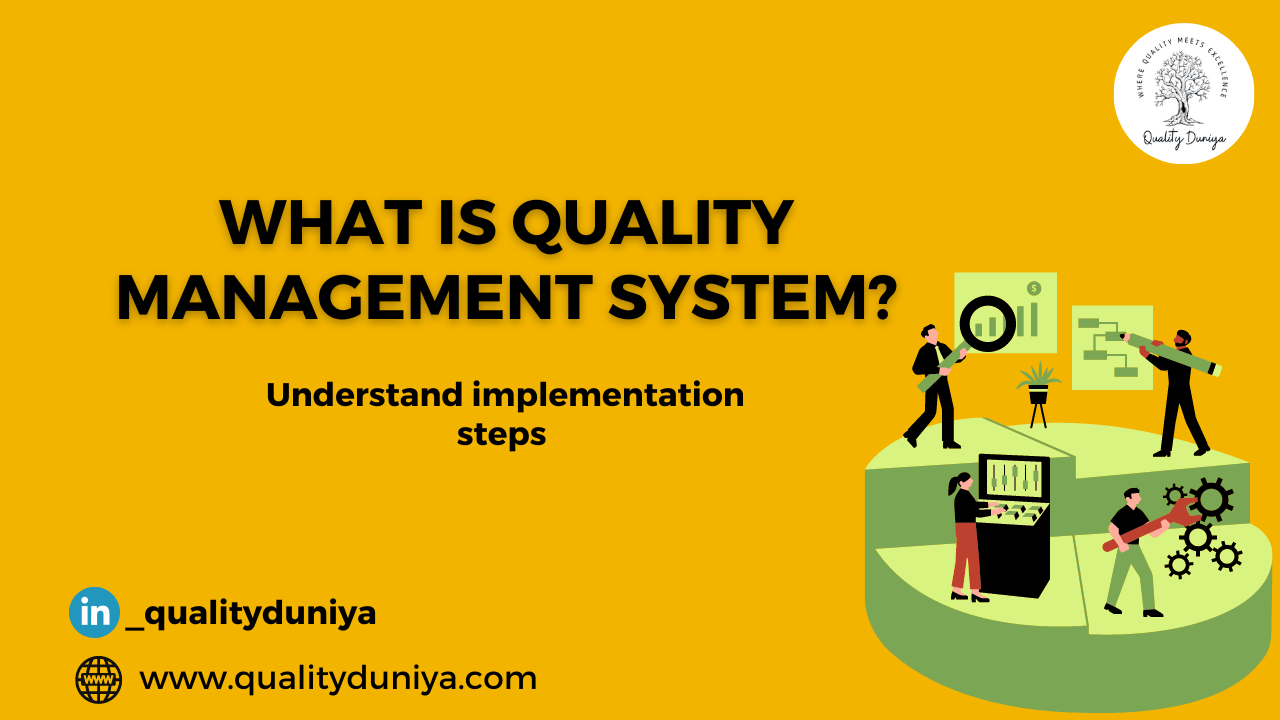What is Quality Management System? Quality management system (QMS) refers to the set of policies, processes, and procedures that an organization uses to ensure that its products or services meet or exceed customer requirements and expectations. The objective of a QMS (Quality Management System) is to ensure that a business delivers consistent and high-quality products or services to its customers.
QMS (Quality Management System) is a critical aspect of any organization's success as it
provides a framework for improving the quality of products or services,
reducing costs, and increasing customer satisfaction. A well-implemented QMS (Quality Management System) can also help a business to comply with regulatory requirements, improve its
reputation, and reduce the risk of product recalls or lawsuits.
The implementation of a QMS (Quality Management system) involves several steps, including:
Quality Planning: This step involves identifying customer
requirements and defining quality standards that must be met to meet those
requirements. Quality planning also involves identifying the processes and
resources needed to achieve these quality standards.
Quality Control: This step involves monitoring the quality
of the products or services being produced to ensure that they meet the defined
quality standards. Quality control includes the use of statistical tools to analyze
data and identify areas for improvement.
Quality Assurance: This step involves ensuring that the
processes used to produce products or services are consistent and meet the
defined quality standards. Quality assurance includes the use of process
controls, such as standard operating procedures, to ensure consistency in the
production process.
Continuous Improvement: This step involves identifying
opportunities for improvement and making changes to the QMS (Quality Management System) to improve the
quality of products or services over time. Continuous improvement involves the
use of quality metrics to track progress and identify areas for improvement.
A well-implemented QMS (Quality Management System) can provide several benefits to an organization, including:
Improved Customer Satisfaction: A QMS (Quality Management System) helps to ensure that
products or services meet customer requirements and expectations, which can
lead to increased customer satisfaction and loyalty.
Increased Efficiency: A QMS (Quality Management System) helps to identify areas for
improvement and eliminate waste in the production process, which can lead to
increased efficiency and reduced costs.
Compliance: A QMS (Quality Management System) can help an organization to comply with
regulatory requirements, such as ISO 9001, which can improve its reputation and
increase its chances of winning new business.
Risk Management: A QMS (Quality Management System) can help to reduce the risk of
product recalls lawsuits, and other negative events by ensuring that products
or services meet defined quality standards.
Conclusion
A quality management system is an essential
tool for any organization that wants to deliver consistent, high-quality
products or services to its customers. The implementation of a QMS (Quality Management System) involves
several steps, including quality planning, quality control, quality assurance,
and continuous improvement. The benefits of a well-implemented QMS include
increased customer satisfaction, increased efficiency, compliance with
regulatory requirements, and reduced risk.




